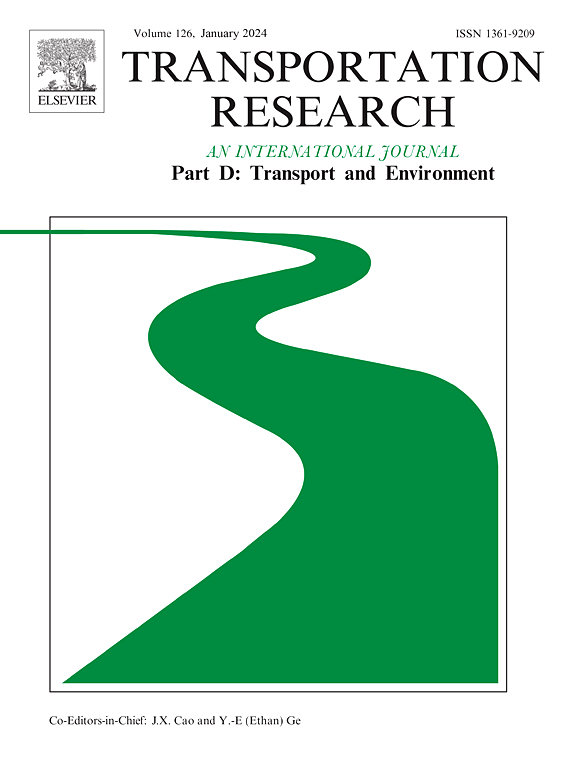青藏铁路沿线野生动物过境设施评价
IF 7.3
1区 工程技术
Q1 ENVIRONMENTAL STUDIES
Transportation Research Part D-transport and Environment
Pub Date : 2025-06-23
DOI:10.1016/j.trd.2025.104866
引用次数: 0
摘要
以往的青藏铁路研究缺乏对野生动物道口结构分布和当地野生动物适宜性的全面认识,而是侧重于个别地下通道的使用。利用最大熵模型和分布数据对青藏铁路沿线11种国家级保护哺乳动物的生境分布进行了建模,结果表明,除藏瞪羚(Procapra picticaudata)的平均生境距离为1.65 km外,其余物种的生境密度均达到标准。通过对23个地下通道的线样和红外摄像机的评价,我们发现所有地下通道都被野生动物使用,记录了9种受保护的哺乳动物,而藏羚羊(Pantholops hodgsonii)在迁徙过程中只使用较大的地下通道。远离高速公路的小型地下通道得到了更有效的利用。这是对铁路沿线野生动物保护区分布和密度的首次评估,比较了大型和小型野生动物保护区,建议在未来的设计中优先考虑适合藏羚羊迁徙需求的大型野生动物保护区建设。本文章由计算机程序翻译,如有差异,请以英文原文为准。
Assessment for the wildlife crossing structures along the Qinghai-Tibet railway
Previous Qinghai-Tibet railway studies have lacked a comprehensive understanding of wildlife crossing structures (WCSs) distribution and suitability for local wildlife, focusing instead on individual underpass usage. We addressed this gap by modeling the habitat distribution of 11 nationally protected mammal species along the railway using maximum entropy modeling and distribution data, and we found that WCSs density met standards for all species except Tibetan gazelles (Procapra picticaudata), whose average WCSs distance was 1.65 km. After evaluating 23 underpasses with line transects and infrared cameras, we found that all underpasses were used by wildlife, with nine protected mammals recorded, while Tibetan antelopes (Pantholops hodgsonii) used exclusively larger underpasses during migration. Smaller underpasses located further from highways were more effectively used. This first assessment of WCSs distribution and density along the railway, comparing large and small WCSs, recommends prioritizing larger WCSs construction tailored to Tibetan antelope migration needs in future designs.
求助全文
通过发布文献求助,成功后即可免费获取论文全文。
去求助
来源期刊
CiteScore
14.40
自引率
9.20%
发文量
314
审稿时长
39 days
期刊介绍:
Transportation Research Part D: Transport and Environment focuses on original research exploring the environmental impacts of transportation, policy responses to these impacts, and their implications for transportation system design, planning, and management. The journal comprehensively covers the interaction between transportation and the environment, ranging from local effects on specific geographical areas to global implications such as natural resource depletion and atmospheric pollution.
We welcome research papers across all transportation modes, including maritime, air, and land transportation, assessing their environmental impacts broadly. Papers addressing both mobile aspects and transportation infrastructure are considered. The journal prioritizes empirical findings and policy responses of regulatory, planning, technical, or fiscal nature. Articles are policy-driven, accessible, and applicable to readers from diverse disciplines, emphasizing relevance and practicality. We encourage interdisciplinary submissions and welcome contributions from economically developing and advanced countries alike, reflecting our international orientation.

 求助内容:
求助内容: 应助结果提醒方式:
应助结果提醒方式:


